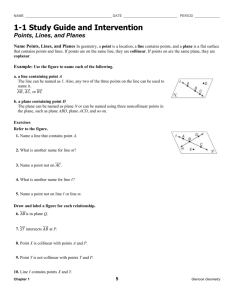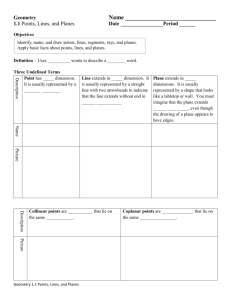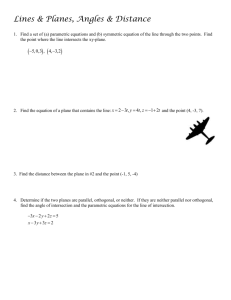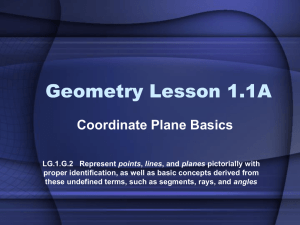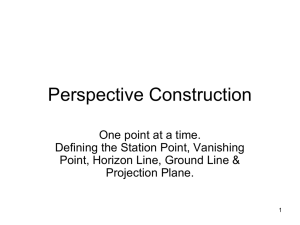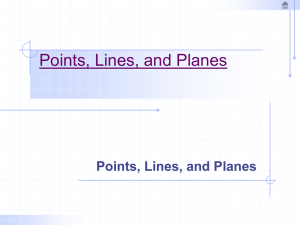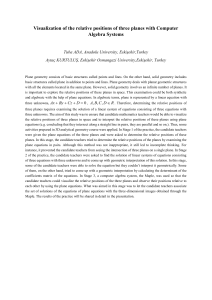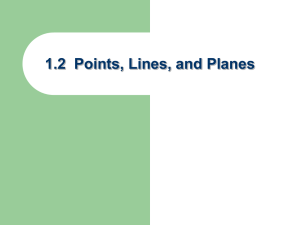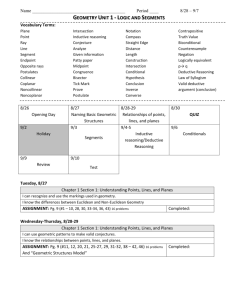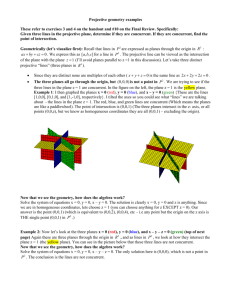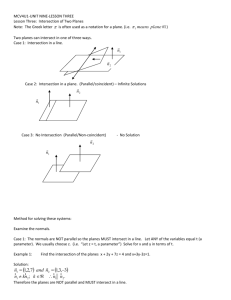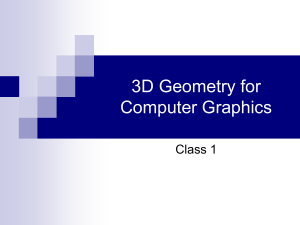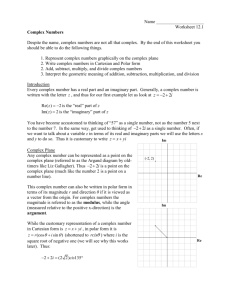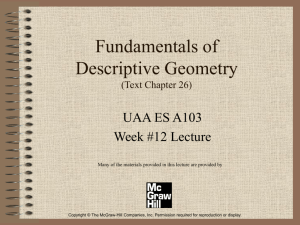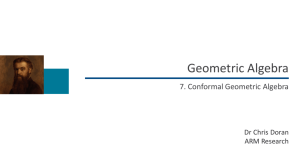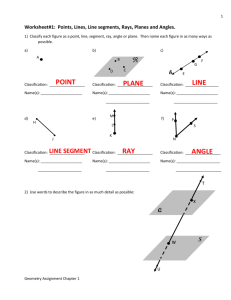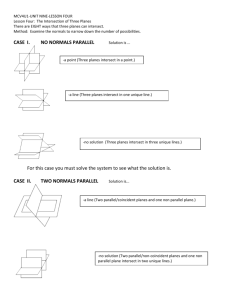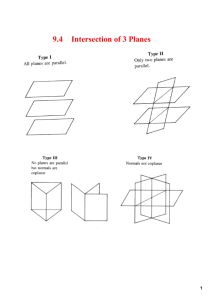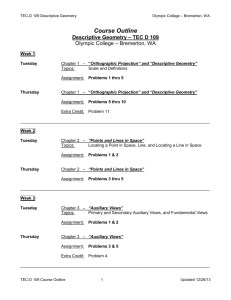U1SLT1H-Extending-Foundations-of-Euclidean
advertisement
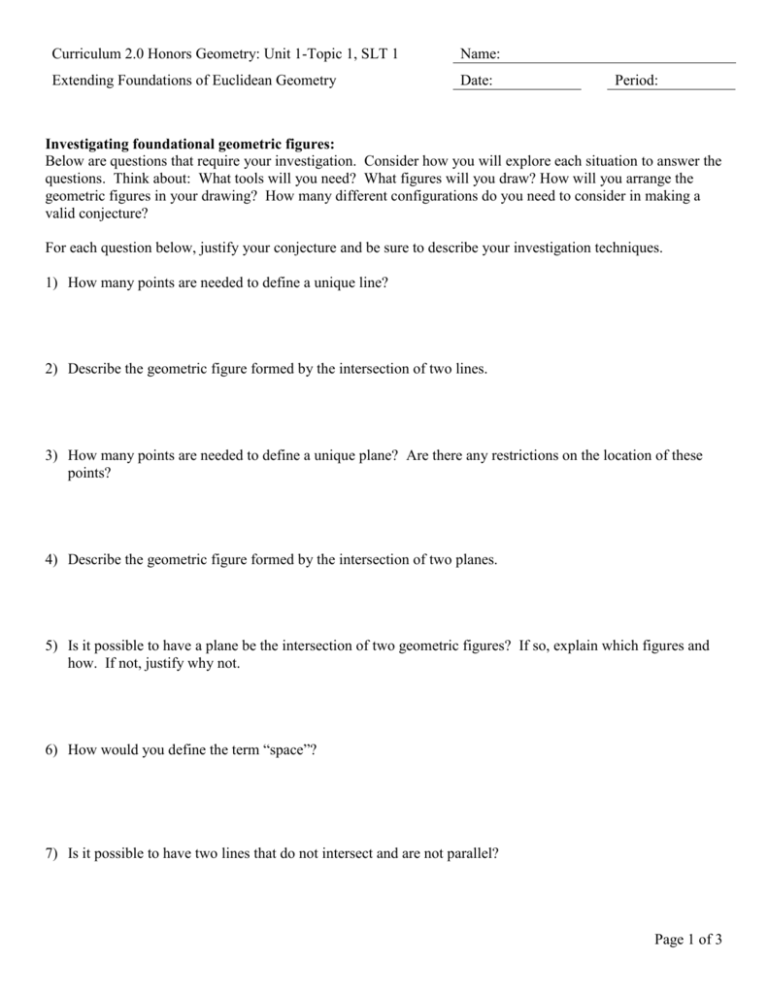
Curriculum 2.0 Honors Geometry: Unit 1-Topic 1, SLT 1 Name: Extending Foundations of Euclidean Geometry Date: Period: Investigating foundational geometric figures: Below are questions that require your investigation. Consider how you will explore each situation to answer the questions. Think about: What tools will you need? What figures will you draw? How will you arrange the geometric figures in your drawing? How many different configurations do you need to consider in making a valid conjecture? For each question below, justify your conjecture and be sure to describe your investigation techniques. 1) How many points are needed to define a unique line? 2) Describe the geometric figure formed by the intersection of two lines. 3) How many points are needed to define a unique plane? Are there any restrictions on the location of these points? 4) Describe the geometric figure formed by the intersection of two planes. 5) Is it possible to have a plane be the intersection of two geometric figures? If so, explain which figures and how. If not, justify why not. 6) How would you define the term “space”? 7) Is it possible to have two lines that do not intersect and are not parallel? Page 1 of 3 Curriculum 2.0 Honors Geometry: Unit 1-Topic 1, SLT 1 Name: Extending Foundations of Euclidean Geometry Date: Period: Dividing Dimensions 8) One line will divide a plane into two distinct regions. Region 1 Region 2 Two lines could divide a plane into three or four regions depending on the arrangement of the lines. Region 1 Region 1 Region 2 Region 4 Region 2 Region 3 Region 3 What is the maximum number of plane regions that you can produce with five lines? As you investigate this problem, remember lines and planes are infinite. 9) Now consider the 3-dimensional version of #8. One infinite plane through space will divide it into two regions. Two planes may cut space into three or four regions, depending on how the planes are arranged. With three planes, it is possible to cut space into as few as four and as many as eight separate regions. What is the maximum number of regions that you can produce with four planes? Five planes? 10) There is also a 1-dimensional version of #8. One point on a line will divide the line into two regions. Into how many regions will two points divide a line? Is there more than one possible solution? What is the maximum number of regions that you can produce with five points? Page 2 of 3 Curriculum 2.0 Honors Geometry: Unit 1-Topic 1, SLT 1 Name: Extending Foundations of Euclidean Geometry Date: Period: Reflect: 11) Compare dividing a line (#10) to dividing a plane (#8). What was the same? What changed? How can you use this reasoning to help you extend the idea to dividing space (#9)? 12) Think back to numbers #1–5. How do the conjectures you made relate to conventions of naming foundational geometric figures? Page 3 of 3

